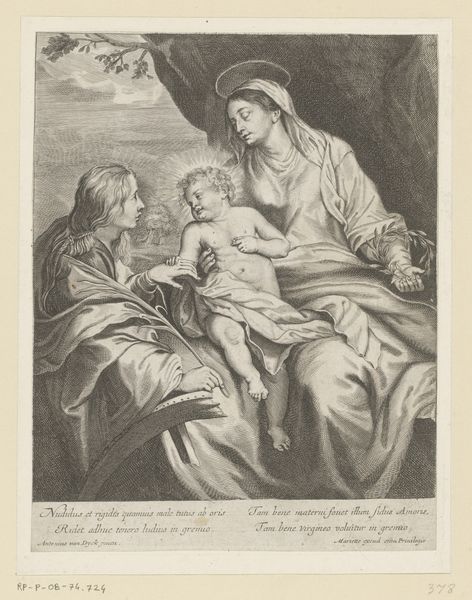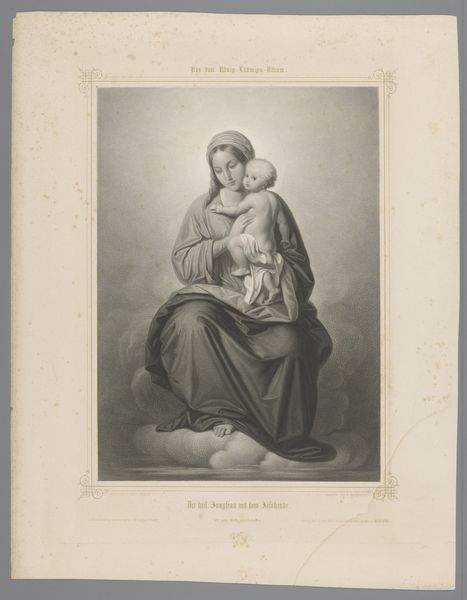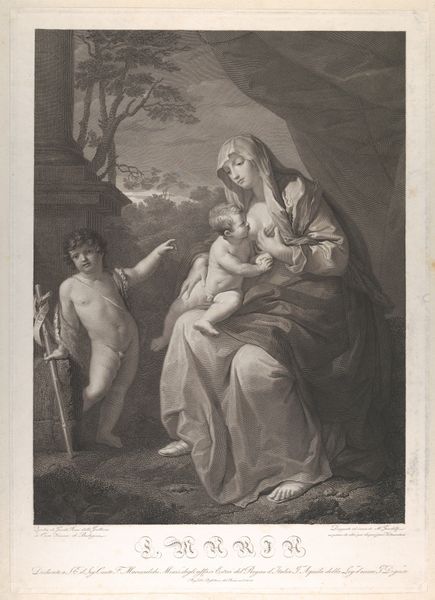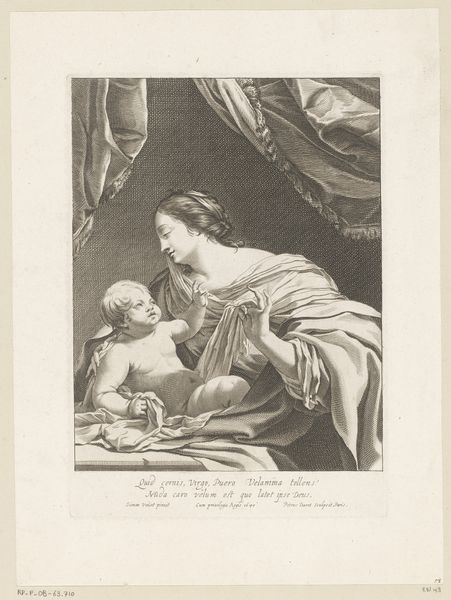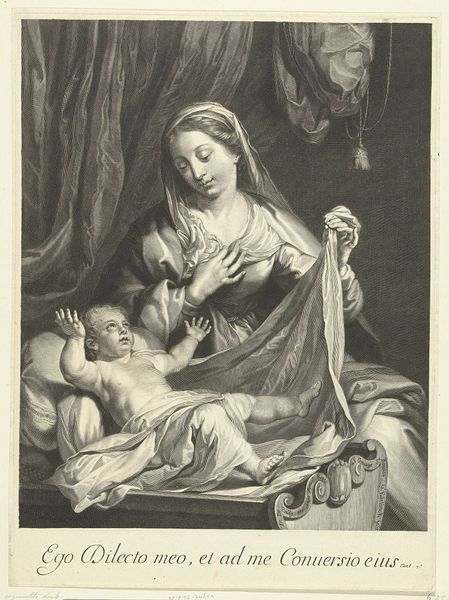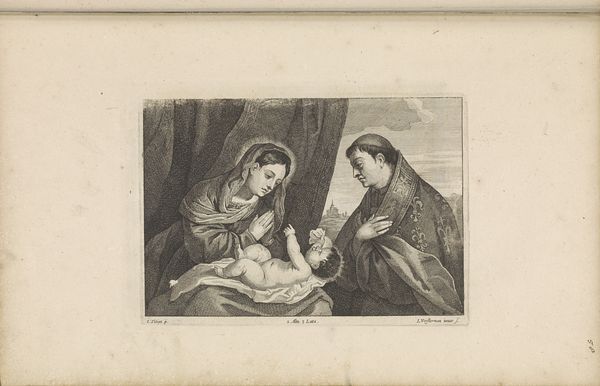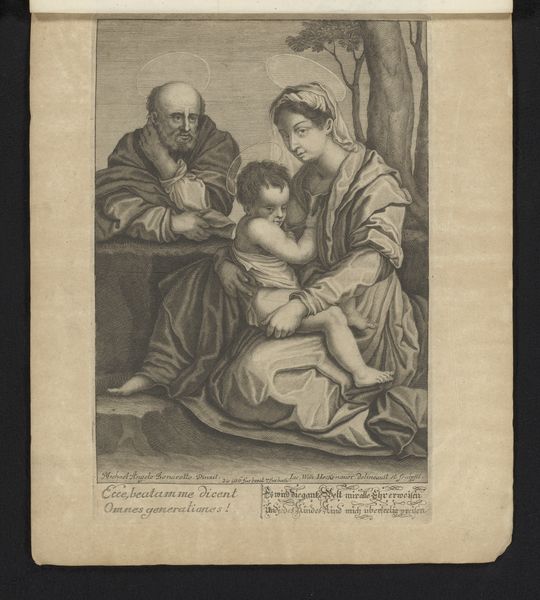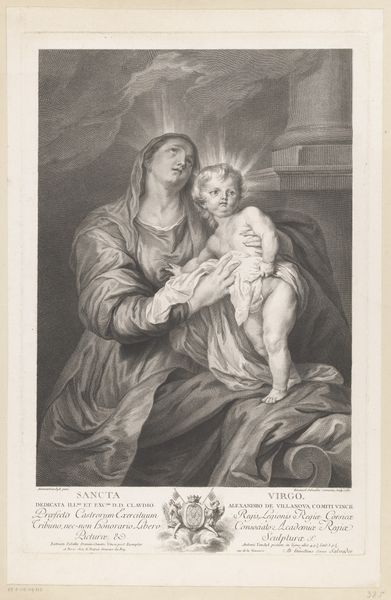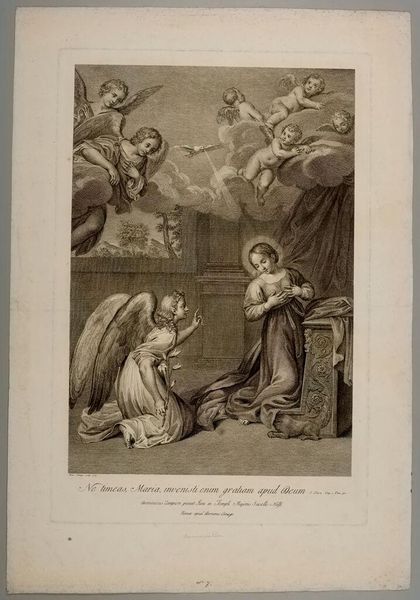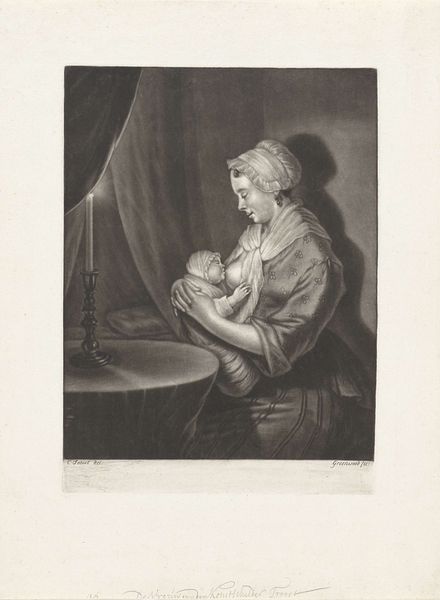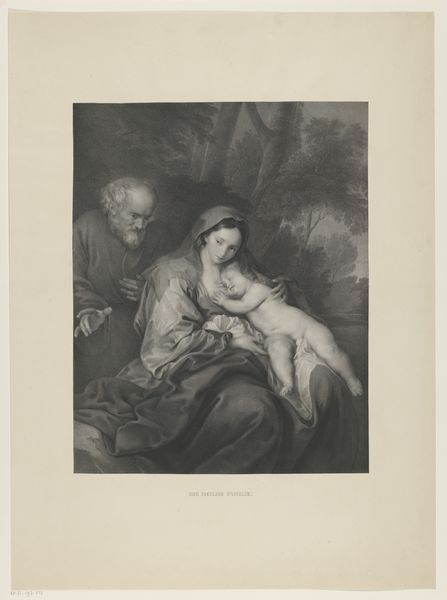
engraving
#
portrait
#
narrative-art
#
baroque
#
figuration
#
engraving
Dimensions: height 388 mm, width 265 mm
Copyright: Rijks Museum: Open Domain
Curator: We’re looking at “Maria met Kind en ezel,” an engraving made after 1716, now housed at the Rijksmuseum. Editor: It's stark and striking. The grayness lends it a raw quality, emphasizing the human experience of motherhood even in this sacred depiction. Curator: Absolutely. Think about the process of engraving; each line is a deliberate mark, demanding a different kind of labor than painting. How might the limitations of this medium shape the narrative, especially regarding Mary’s role and experience? The inscription gives us more insight, referencing Cardinal Nerii Corsini. Editor: Good point. Engraving was such a crucial technology for disseminating images. So, while on the surface, it is a typical depiction of the Madonna and Child, its materiality reveals something about its purpose—mass consumption and replication in baroque society. The lines are efficient. Curator: It certainly allows for widespread consumption, and dissemination of power. Think about the implied social context here. A woman and child on the margins are brought to the center, not merely for sentimental reasons, but because that vulnerability itself could serve a political purpose, emphasizing certain church values. The image is intended to evoke a powerful set of social expectations. Editor: The use of light and shadow is quite pronounced. I'm drawn to how the stark light emphasizes the textures around her; not silks and jewels, but hay, rough cloth, and her own skin as a symbol of the humble scene of Jesus's birth. How does that direct the viewers reading of wealth? Curator: It disrupts those hierarchies, which speaks volumes when the artwork’s commission came from within the church. We might view this image, and similar works in the period, as expressions of societal negotiation. Editor: I see the print more clearly now, the material conditions of its making in this religious setting makes for an intriguing perspective on devotion. Curator: Agreed. Considering the confluence of religious and social narratives intertwined with materiality gives us rich avenues of contemplation.
Comments
No comments
Be the first to comment and join the conversation on the ultimate creative platform.
